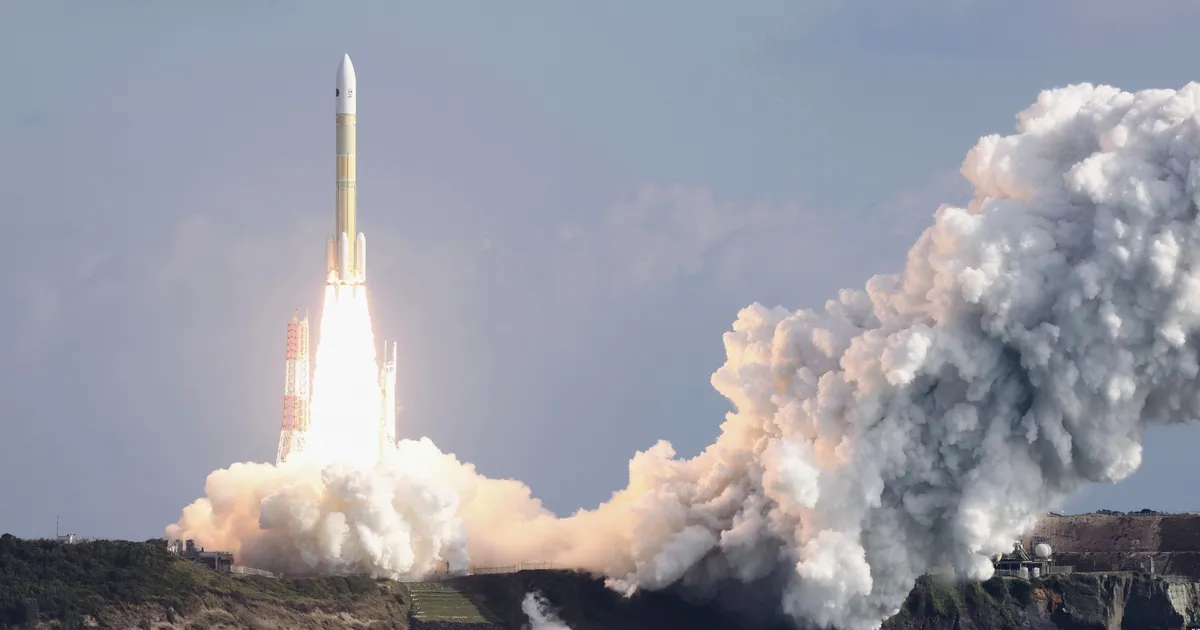26th October 2025 – Tanegashima Space Center, Japan
In a landmark achievement that reaffirms its status as a leading space-faring nation, Japan successfully launched an advanced new cargo spacecraft to the International Space Station (ISS) for the first time. The new vessel, named the HTV-X, roared into the pre-dawn skies from the Tanegashima Space Center at 5:00 AM Japan Standard Time on Sunday, 26th October 2025, atop a Mitsubishi Heavy Industries H-III rocket. This flawless launch marks a significant technological leap from its predecessor, the reliable H-II Transfer Vehicle (HTV), or “Kounotori” (White Stork), which completed nine successful missions between 2009 and 2020. The HTV-X, embodying a decade of engineering innovation, is designed to be smarter, more capable, and more cost-effective, ensuring Japan’s continued and vital role in supporting the orbital outpost for years to come.
The mission, designated HTV-X1, is carrying over 5,800 kilograms (12,800 pounds) of critical supplies. The cargo includes a diverse array of essentials for the seven astronauts currently aboard the ISS: fresh food and drinking water, high-pressure nitrogen and oxygen tanks to replenish the station’s atmosphere, new scientific experiment hardware, and spare parts for life support systems. Furthermore, the spacecraft is loaded with several small CubeSats, which will be deployed from the ISS’s Kibo laboratory module, and a suite of novel research payloads that will investigate everything from material science in microgravity to the effects of space radiation on biological samples. The launch was a picture-perfect event, with the H-III rocket performing its ascent nominally, releasing the HTV-X into its intended orbit approximately 15 minutes after liftoff. The Japan Aerospace Exploration Agency (JAXA) confirmed that the spacecraft successfully deployed its solar panels and established stable communication with ground control, declaring the initial phase of the mission a complete success.
The development of the HTV-X represents a fundamental evolution in Japan’s cargo logistics philosophy. While the original HTV was renowned for its robustness and reliability, the new model incorporates numerous advancements aimed at sustainability and enhanced performance. One of the most significant improvements is in the area of cost reduction and operational efficiency. The HTV-X’s design simplifies the spacecraft’s structure and avionics, and its new proximity communication system allows for a more automated and streamlined rendezvous process with the ISS. The new spacecraft also features a larger, more accessible cargo compartment and enhanced debris protection shielding, making it better suited for the increasingly complex environment of low-Earth orbit. Perhaps the most forward-looking feature is its re-entry capsule, a small, retrievable section that will allow for the return of valuable experiment results to Earth—a capability its predecessor lacked, as all previous HTVs burned up with trash during atmospheric re-entry.
Scientists and engineers involved in the project have expressed immense pride and optimism following the successful launch. Dr. Hiroshi Sasaki, the lead project manager for HTV-X at JAXA, stated, “Today, we have not just launched a spacecraft; we have launched the future of Japanese space logistics. The HTV-X is the culmination of years of hard-learned lessons from the Kounotori missions, refined into a vehicle that is not only more capable but also smarter and more sustainable. Its success is critical for maintaining the steady flow of science and supplies to the International Space Station.” Echoing this sentiment, Professor Aki Tanaka, a space systems engineer at the University of Tokyo, commented, “The technological demonstrations on this first flight, particularly the new autonomous rendezvous sensors and the lightweight composite structure, are being closely watched. The data we gather will be invaluable not just for future cargo missions, but for informing the design of Japan’s future crewed spacecraft as well.”
The HTV-X1 is now on a carefully calculated trajectory, slowly raising its orbit over several days to match that of the ISS, which flies at an altitude of approximately 400 kilometers. It is scheduled to perform a final automated approach and berthing to the space station’s Harmony module on Tuesday, 28th October 2025. Upon arrival, the station’s Canadian-built robotic arm, operated by astronauts inside the cupola, will reach out and capture the free-flying spacecraft, after which ground controllers will remotely guide it to its docking port. The successful berthing will trigger a flurry of activity from the crew, who will begin the multi-day process of unpacking the precious cargo.
This successful launch carries profound implications that extend far beyond a single resupply mission. It secures Japan’s pivotal role in the international consortium that operates the ISS at a time when the station’s operations are planned to continue until at least 2030. Moreover, the technologies proven by the HTV-X are directly applicable to Japan’s ambitious future goals in space exploration. The expertise gained in autonomous rendezvous, high-efficiency cargo delivery, and sample return is seen as a stepping stone toward Japan’s aspirations for lunar logistics, potentially contributing cargo delivery services for the NASA-led Gateway, a lunar-orbiting space station that is a cornerstone of the Artemis program. The HTV-X mission on 26th October 2025, therefore, is not merely a logistical delivery; it is a powerful statement of Japan’s enduring commitment to space exploration and its intent to be a major player in the next chapter of humanity’s journey into the solar system.




